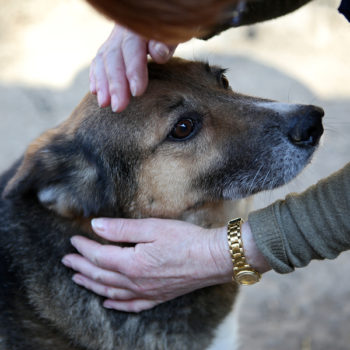Most of us in animal welfare are on board with the concept of community cats — unowned cats who live in neighborhoods, some feral, some social. Can that concept work for dogs, too?
It’s not an idea that sits easily with most people. Communities with large numbers of stray dogs in the U.S. are rare, but those that exist report many problems. Won’t the dogs bite? Fight? Create a threat to public safety?
We can get answers to some of those questions by looking outside our borders, to countries where free-roaming and unowned dogs are common. What are their lives like? How do they impact their communities?
In a study published in the Journal of Veterinary Behavior, researchers took a look at one such community, Campo Largo, Brazil, where a community dog program has been in place since 2012.
Free-roaming dogs, most unowned, are common in many parts of Brazil, a nation that has around 37 million dogs. In Campo Largo, a program is operated by the municipal government where people known as “maintainers” provide care for street dogs in a specific area. They give the dogs shelter, water and food, and notify the municipal veterinarian if a dog is sick or injured. All the dogs in the program are vaccinated and spayed or neutered, and the maintainers and the dogs they are responsible for are registered with the local government. There are 80 dogs in the program.
The dogs are frequently fed and have positive interactions with other community members, and the dogs appear to accept the presence of familiar humans without aggression or fear. In fact, many of the people were observed hugging, kissing and petting the dogs. However, they do react more negatively to strangers, who despite that also frequently show the dogs affection and offer them food.
Some welfare issues were observed, including strangers kicking the dogs. Some human and dog safety issues such as car-chasing were also observed. But overall, the authors called the program is a “promising step toward improving the welfare of street dogs,” concluding:
(It) seemed to encourage a form of task delegation between the Campo Largo community and the local municipal government. In the future, we would recommend further studies to further explore the impacts of the program on the welfare of community dogs and the possibility of implementing this program in other regions facing issues with free roaming dogs. Although dog overpopulation and abandonment will likely continue, attention must be brought to the animals that are currently living on the streets. In time, better systems for managing dog over population will hopefully be established to more adequately address the issue of free-roaming dogs in this region of Brazil, as well as other areas around the world, that also encompass animal welfare. Appropriately, the community dog program of Campo Largo may offer one possible method in addressing the needs of these animals in the meantime.
The entire study can be accessed online by journal subscribers. It can also be purchased by non-subscribers, and the abstract read, on the Science Direct website.
Don’t miss more innovative ideas for pet fostering, adoption, shelter medicine and stories about how pets make our lives better and happier — sign up here!

